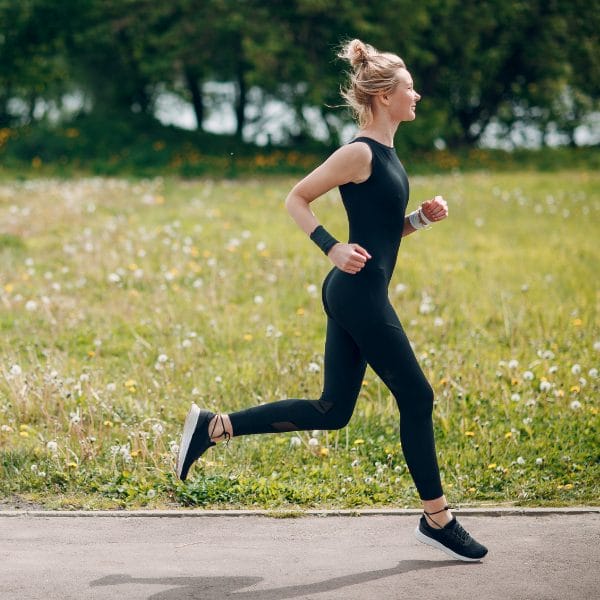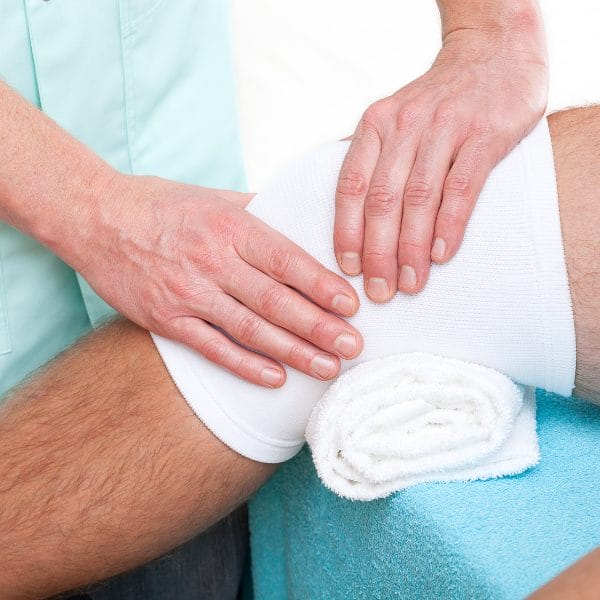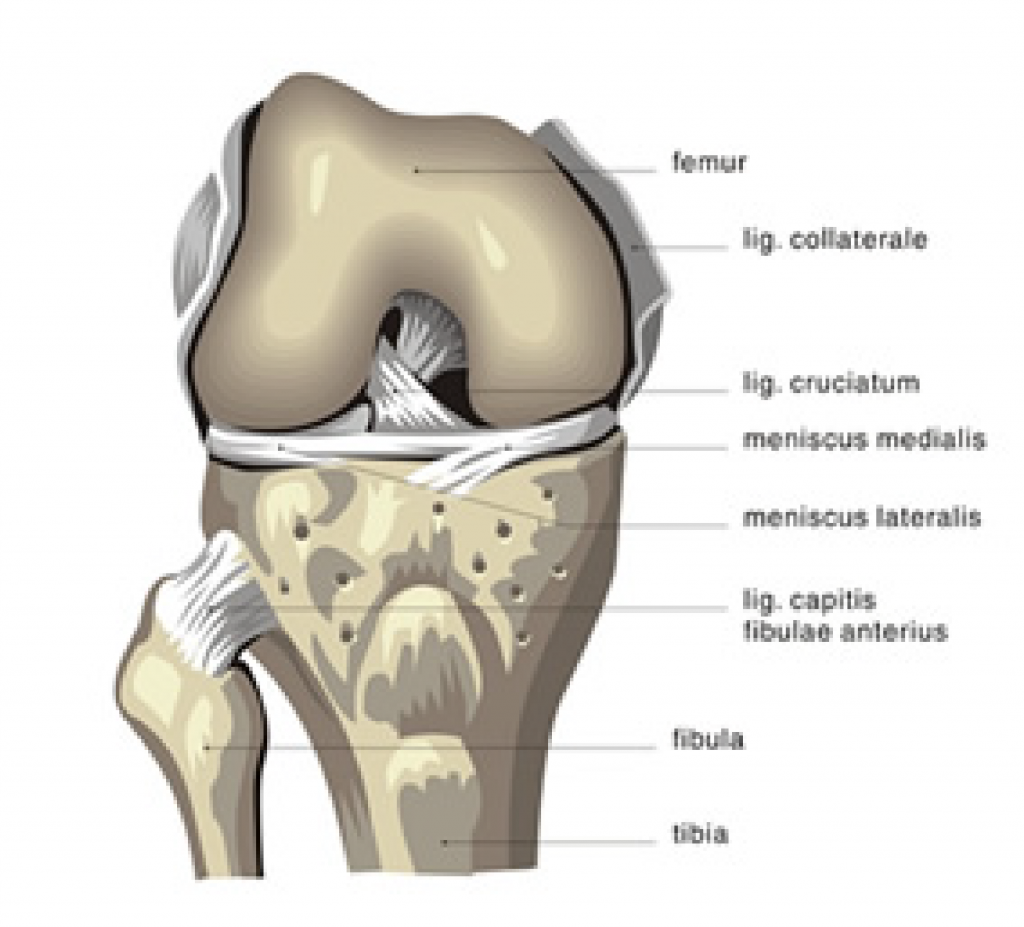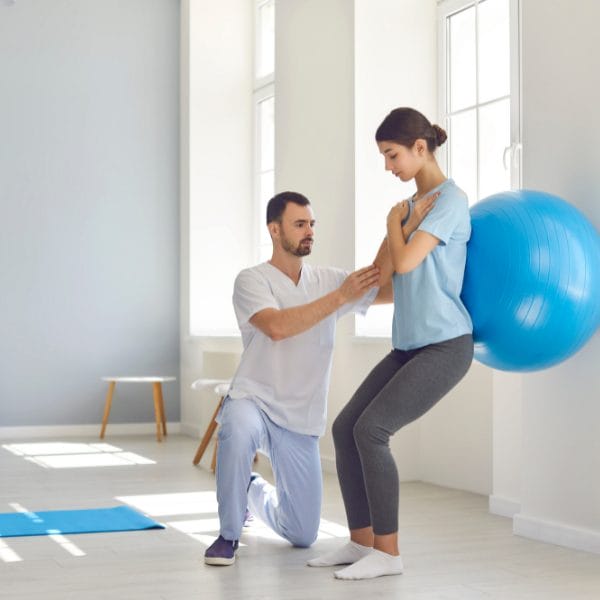Knee Pain Jogging
Did you know that your knee joint takes on a lot of stress when you jog?
PostureGeek.com Tweet

Did you know that your knee joint takes on a lot of stress when you jog? Jogging is a high impact exercise and can be hard on the knees. This article will discuss the mechanics of jogging and how the knee joint is affected. We will also explore techniques and strategies that can be used to improve jogging techniques and minimize knee pain. If you are a jogger, it is essential to understand how your knees work to protect them from injury.
your gait when jogging?

The biomechanics of jogging refers to how the body moves when running. Jogging is a type of running, so the biomechanics of jogging is very similar to running.
When you jog, your body moves in a series of motions called the gait cycle. The gait cycle consists of four phases:
- Stance: during the stance phase, your foot hits the ground, and your weight is transferred to it.
- Swing: during the swing phase, your foot is lifted off the ground, and your weight is transferred to your other foot.
- Pre-heel strike: during the pre-heel strike phase, your weight is transferred to your other foot, and you prepare to land on it
- Heel strike: during the heel strike phase, you actually land on your foot, and your weight is transferred to it.
The gait cycle repeats continuously as you jog, and the duration of each phase varies depending on your speed. For example, at a slow pace, the stance phase may last for longer than the swing phase, while at a fast pace, the swing phase may last for longer than the stance phase.
How does the knee joint work?

The knee joint is a hinge joint that connects the thighbone (femur) to the shinbone (tibia). It allows the leg to bend and twist and provides stability for standing and walking. The knee is also a weight-bearing joint, which means it bears most of your body’s weight when standing.
The knee is supported by three main ligaments:
- The anterior cruciate ligament (ACL) is located in the front of the knee and helps to keep the knee stable.
- The posterior cruciate ligament (PCL) is located in the back of the knee and helps to keep the knee stable.
- The medial collateral ligament (MCL) is located on the inside of the knee and helps to keep it stable.
The knee joint is also surrounded by a meniscus, a piece of cartilage that acts as a cushion between the bones. The meniscus can become damaged or torn if you twist your knee too much or if you are overweight.
What is the role of the foot and ankle in running?

The foot and ankle play a key role in running. During the stance phase of running, the foot and ankle are responsible for absorbing the shock of impact. This shock is then transferred up the leg to the knee joint. The knee joint must then dissipate this force, which can be difficult if the joint is not healthy or strong. As a result, joggers with weak knees or joint pain may find that running causes more pain than it is worth. If you are experiencing pain in your knees when you jog, it is important to consult a recognized health care provider to find out what is causing the pain and how it can be treated.
Is running jogging bad for knees pain?
There is some debate over whether or not jogging is bad for the knees.
PostureGeek.com Tweet
There is some debate over whether or not jogging is bad for the knees. Jogging is a high impact exercise and can be hard on the knees. Some experts believe that this repeated pounding can damage the knee joint and increase the risk of injury. However, other experts believe that jogging can be safe for the knees if done correctly. Jogging is a great way to get in shape, but it’s essential to do it safely to not injure your knees.
What are the most common knee pain and injuries?

The most common knee injuries associated with jogging are:
- Runner’s knee: also known as patellofemoral pain syndrome, runner’s knee is a condition that causes pain around the kneecap. It is typically caused by overuse or incorrect running technique.
- Iliotibial band syndrome: iliotibial band syndrome is a condition that causes pain on the outside of the knee.
- ACL tear: the ACL is a ligament in the knee that helps to keep it stable. The ACL tear can occur from a sudden twisting motion, such as when you pivot on your foot.
What is Runner's Knee?
Runner’s knee is a condition that can be caused by jogging or running. It is also called patellofemoral pain syndrome, or PFPS. Runner’s knee can cause pain in the front of the knee, around the kneecap. It is a type of knee pain that is common among runners. The exact cause of runner’s knee is unknown, but it is thought to be caused by overuse or repetitive stress on the knee joint. Symptoms of runner’s knee include pain, swelling, and stiffness in the knee.
There are several things that you can do to prevent runner’s knee:
- Warm up before you run. A good warm-up will help loosen up your muscles and prepare your body for exercise.
- Stretch after you run. Stretching will help keep your muscles flexible and may help prevent runner’s knee.
- Wear appropriate shoes. Ensure that your shoes are in good condition and provide adequate support for your feet.
- Use a foam roller. Foam rolling can help stretch out the muscles and tendons around your knee joint.
- Take breaks during long runs. If you are running for an extended period, take a break every few miles to walk and stretch.
How does the iliotibial band affect the knee?

The iliotibial band is a tendon that runs down the side of the thigh. It helps to stabilize the knee and hip joints. However, when this tendon becomes tight, it can stress the knee joint and cause pain. This is known as Iliotibial Band Syndrome.
There are a few things you can do to help relieve pain from Iliotibial Band Syndrome, including:
- Stretching the iliotibial band regularly
- Strengthening the muscles around the knee joint
- Wearing a knee brace to support the joint
- Taking anti-inflammatory medication to reduce inflammation.
What is an ACL tear?

An ACL tear is a type of knee injury that can occur from a sudden twisting motion, such as when you pivot on your foot. The ACL is a ligament in the knee that helps to keep it stable. The ACL tear can occur from a sudden twisting motion, such as when you pivot on your foot.
Symptoms of an ACL tear include pain, swelling, and instability in the knee. If you think you may have torn your ACL, it is important to see a doctor right away.
There are many things you can do to minimize knee pain when jogging, including:

Adjusting Your Form
One way to protect your knees when you jog is to adjust your form. For example, make sure that you are landing on your midfoot rather than your heel when you run. This will help absorb the shock of impact and reduce the stress on your knees.
You should also keep your body weight evenly distributed between your feet, rather than leaning too far forward or backward. Leaning too far forward can put excess strain on your knee joint while leaning too far back can increase the risk of ankle sprains.
You can also improve your jogging form by keeping your head up and looking ahead. This will help you to maintain good posture and avoid hunching over.
Use the Right Running Shoes
Another way to protect your knees when you jog is to use the right running shoes. When shopping for running shoes, be sure to select a pair that has good shock absorption and cushioning. This will help reduce the impact of each step on your knee joint. In addition, make sure that your shoes are correctly fitted and provide enough support for your feet.
Strengthen Your Knee Muscles
If you have weak knees or joint pain, one of the best ways to protect them is to strengthen your knee muscles. Many exercises can help build strength in your knees, including squats, lunges, and leg curls. It is important to incorporate these exercises into your regular routine to help keep your knees healthy.
Take Regular Breaks
Last but not least, one of the best ways to protect your knees when you jog is to take regular breaks. Jogging for long periods can be hard on the knees, so it is essential to give them a break every now and then. For example, take a few minutes to walk around after you’ve been jogging for a while, or stop and rest if you start to feel pain in your knees. Jogging is a great exercise, but it’s important to be mindful of how your knees are affected by it. By following these tips, you can minimize the stress on your knee joint and keep them healthy while you jog. Thanks for reading!
Stretch properly
When you jog, it’s important to stretch properly before and after your run. This will help loosen up your muscles and reduce the risk of injury. Many different stretches can help stretch your hips, thighs, and calves. Be sure to choose a few stretches that work best for you and make them a part of your regular routine.
Ice the knee
Ice the knee after exercise: icing the knee can help to reduce swelling and pain. Place a cold pack or ice wrap on the knee for 15-20 minutes after finishing your run. Repeat this process several times throughout the day.
Rest the knee
If you are experiencing pain in your knees, it’s best to rest them until the pain subsides. Continuing to jog with painful knees can cause further damage and increase the risk of injury. Instead, take a few days off from running and try other low-impact exercises such as swimming, biking, or walking. Then, when you feel better, you can slowly start to add jogging back into your routine.
Be mindful of how your knees are affected by jogging and take the necessary precautions to protect them. Jogging is a great exercise, but it’s important to be smart about how you do it.
Consult a health care provider
If you are experiencing knee pain when you jog, it is important to consult a recognized health care provider to find out what is causing the pain and how it can be treated.
Finally
Jogging is a great way to get in shape, but it's important to do it safely to not injure your knees.
PostureGeek.com Tweet
Jogging is a great way to get in shape, but it’s important to do it safely to not injure your knees. Jogging can damage the knee joint and increase the risk of injury if not done correctly. You can do many things to minimize knee pain when jogging, including adjusting your form, using the right running shoes, strengthening your knee muscles, and taking regular breaks. In addition, when stretching correctly before and after a jog, you can help reduce the risk of injury even further. Jogging is a great exercise, but be sure to take these precautions for healthy knees!
PLEASE NOTE
PostureGeek.com does not provide medical advice. This information is for educational purposes only and is not intended to be a substitute for professional medical attention. The information provided should not replace the advice and expertise of an accredited health care provider. Any inquiry into your care and any potential impact on your health and wellbeing should be directed to your health care provider. All information is for educational purposes only and is not intended to be a substitute for professional medical care or treatment.
